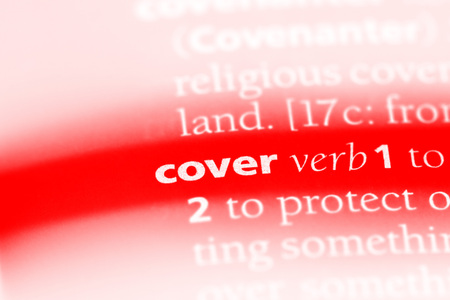1. Understanding Collision Coverage
When you’re shopping for car insurance in the U.S., you’ll often hear about “collision coverage.” But what exactly does it mean, and when would you need it? Let’s break it down in simple terms.
What Is Collision Coverage?
Collision coverage is a type of auto insurance that helps pay for repairs to your vehicle if it’s damaged in an accident, regardless of who was at fault. This coverage is all about your car—it won’t cover someone else’s vehicle or property.
Types of Damages Covered by Collision Coverage
| Scenario | Does Collision Coverage Apply? |
|---|---|
| You hit another car | Yes |
| You hit a tree, pole, or guardrail | Yes |
| Your car rolls over (single-car accident) | Yes |
| Your car is damaged by potholes | Yes |
| Your car is stolen or vandalized | No (That’s comprehensive coverage) |
| Your windshield is cracked by a rock while driving | No (Usually comprehensive coverage) |
Typical Scenarios Where Collision Coverage Applies
- Accidents with other vehicles: If you rear-end someone or get hit at an intersection, collision coverage steps in to help fix your car.
- Single-car crashes: If you swerve to avoid an animal and hit a fence, or lose control on icy roads and end up in a ditch, collision coverage has your back.
- Hit-and-run incidents: If someone hits your parked car and drives off, this coverage can help pay for your repairs (depending on your policy).
Keep in Mind:
Collision coverage usually comes with a deductible—the amount you pay out-of-pocket before your insurance kicks in. The higher the deductible, the lower your premium tends to be, but you’ll pay more if you file a claim.
2. What Is Comprehensive Coverage?
Comprehensive coverage is a type of car insurance that helps pay to repair or replace your vehicle if it’s damaged by something other than a collision. While it’s not required by law in most states, it’s often recommended for drivers who want extra protection, especially if they have a newer or more valuable car or live in areas with high risks of theft or natural disasters.
What Does Comprehensive Coverage Protect Against?
This coverage steps in when things happen that are out of your control. Think about events like:
- Theft – if your car gets stolen
- Vandalism – damage from someone deliberately messing with your vehicle
- Natural disasters – such as hail, floods, tornadoes, hurricanes, earthquakes, or falling trees
- Fire – whether from wildfires or accidental fires
- Animal damage – like hitting a deer or other animals on the road
- Broken windows or glass – including chips and cracks not caused by a crash
How Does It Differ from Collision Coverage?
It’s easy to mix up comprehensive and collision coverage since both deal with repairs to your own vehicle. The main difference is what causes the damage:
| Type of Coverage | What It Covers | Examples |
|---|---|---|
| Comprehensive | Non-collision incidents (things out of your control) | Theft, vandalism, hail, fire, animal strikes |
| Collision | Accidents involving another vehicle or object while driving | Crashed into another car, hit a pole, rolled over |
Do You Need Comprehensive Coverage?
If you lease or finance your car, your lender will probably require comprehensive coverage. If you own your car outright, it’s optional. Consider factors like your car’s value, where you live (high crime or storm-prone areas), and how much risk you’re willing to accept.

3. Key Differences Between Collision and Comprehensive
When youre shopping for car insurance in the U.S., it’s easy to get confused about what collision and comprehensive coverages actually do. Both protect your vehicle, but they apply in different situations. Let’s break down their main differences so you can better understand which coverage fits your needs.
What Each Coverage Protects
| Type of Coverage | What’s Covered | Common Examples | What’s Not Covered |
|---|---|---|---|
| Collision | Damage to your car from hitting another vehicle or object, regardless of who’s at fault. | – You hit another car – You back into a pole – Your car rolls over |
– Theft – Vandalism – Damage from weather or animals |
| Comprehensive | Damage to your car caused by events other than collisions. | – Theft – Vandalism – Hail, flood, fire – Hitting a deer or animal – Falling objects (like tree branches) |
– Damage from hitting another vehicle or object – Normal wear and tear – Mechanical breakdowns |
Main Situations Each Covers
- Collision Coverage: Think of this as protection for accidents where your car hits something—whether it’s another vehicle, a fence, or even if you flip your car. It doesn’t matter who caused the accident; if there’s damage from an impact, collision kicks in.
- Comprehensive Coverage: This is for almost everything else that can damage your car when you’re not driving it—like theft, natural disasters, vandalism, or animal strikes. If something unpredictable happens that isn’t a crash with another vehicle or object, comprehensive has you covered.
Quick Comparison at a Glance
| Collision | Comprehensive | |
|---|---|---|
| Covers Crashes? | Yes (with cars, objects, rollovers) | No |
| Covers Non-Crash Events? | No | Yes (theft, weather, animals) |
| Required by Lenders? | Usually if you lease/finance a car | Usually if you lease/finance a car |
| Pays for Your Car Repairs? | Yes (after deductible) | Yes (after deductible) |
| Pays for Other Cars’ Damage? | No (that’s liability coverage) | No (that’s liability coverage) |
In Summary: When Would You Use Each?
- If you crash into something or someone else crashes into you: Collision coverage pays for repairs to your own car.
- If your car is stolen, damaged by hail, vandalized, or hit by an animal: Comprehensive coverage pays for the damages.
- BOTH types have deductibles—an amount you pay out-of-pocket before insurance covers the rest.
- BOTH may be required by your lender if you’re still making payments on your vehicle.
4. Do You Need Collision, Comprehensive, or Both?
Deciding whether you need collision coverage, comprehensive coverage, or both depends on several personal and financial factors. Let’s break down what you should consider before choosing the best option for your situation.
Factors to Consider
Your Car’s Value
If you drive a newer or high-value vehicle, it often makes sense to carry both collision and comprehensive coverage. These policies help protect your investment in case of accidents, theft, or other damages. However, if your car is older and not worth much, the cost of these coverages might outweigh the benefits. Ask yourself: Would you be okay paying out-of-pocket if your car was totaled or stolen?
Your Location
Where you live can influence your risk level. For example:
| Location Type | Risks to Consider | Recommended Coverage |
|---|---|---|
| Urban Areas | Higher rates of theft, vandalism, and accidents | Both collision & comprehensive |
| Rural Areas | Animal collisions, weather-related damage | Mainly comprehensive |
| Safe Neighborhoods | Lower crime rates | You may opt out of comprehensive if comfortable with the risk |
Loan or Lease Requirements
If you’re financing or leasing your vehicle, most lenders require you to carry both collision and comprehensive coverage until the loan is paid off or the lease ends. This protects their investment as well as yours.
Your Personal Financial Situation
If a major accident or loss would be financially devastating for you, carrying both types of coverage provides peace of mind. On the other hand, if you have enough savings to replace or repair your vehicle without hardship, you might choose to skip one or both coverages on an older car.
Quick Comparison Table
| Your Situation | Collision Needed? | Comprehensive Needed? |
|---|---|---|
| New/expensive car, loan/lease in place | Yes | Yes |
| Old car with low value and no loan/lease | No (optional) | No (optional) |
| Live in high-crime area or severe weather region | Optional (depends on accident risk) | Yes |
| Able to pay out-of-pocket for repairs/replacement | No (if comfortable with risk) | No (if comfortable with risk) |
Summary of Key Points to Help You Decide:
- If your car is new or valuable—or if you have a loan/lease—both coverages are usually wise.
- If you live somewhere with high risks of theft, vandalism, wildlife collisions, or severe weather, comprehensive is important.
- If an accident would cause serious financial hardship, consider keeping both coverages even on an older car.
- If your car’s value is low and you can afford repairs yourself, you might drop one or both coverages to save money.
Consider these factors carefully when deciding on the right coverage for your needs and budget.
5. Cost Considerations and How to Choose
When deciding between collision and comprehensive coverage, understanding the costs involved is key. Let’s break down how premiums, deductibles, and other expenses differ, so you can make a choice that fits your needs and budget.
Premiums: What You Pay Each Month
Your premium is the amount you pay your insurance company for coverage—usually monthly or every six months. Collision coverage tends to be more expensive than comprehensive because it covers damage from accidents, which are statistically more common than non-collision incidents like theft or weather damage.
| Coverage Type | Average Premium Cost |
|---|---|
| Collision | Higher (typically $300–$500/year) |
| Comprehensive | Lower (typically $150–$300/year) |
Deductibles: Your Out-of-Pocket Cost
A deductible is what you pay out of pocket before your insurance kicks in. Both collision and comprehensive coverage require deductibles, but you can usually choose your amount—higher deductibles mean lower premiums, but more money out of your pocket if you file a claim.
| Coverage Type | Common Deductible Range |
|---|---|
| Collision | $250–$1,000+ |
| Comprehensive | $100–$1,000+ |
Other Costs to Think About
- If you lease or finance your car, your lender may require both coverages.
- Your location can affect rates—urban areas with higher accident or theft rates usually have higher premiums.
- The age and value of your car matter; newer or more valuable cars cost more to insure.
- Your driving record and claims history will impact your premium.
How to Choose the Right Policy for You
Assess Your Car’s Value
If your car is older and not worth much, paying for both coverages might not make sense. Check its current market value using resources like Kelley Blue Book.
Consider Your Risk Tolerance
If you want peace of mind against a range of risks (like theft, vandalism, or animal damage), comprehensive may be important. If youre mainly worried about at-fault accidents, focus on collision.
Balance Deductible and Premium Costs
If you want lower monthly payments, pick a higher deductible—but make sure you could afford it if something happens.
Quick Tips for Picking the Best Coverage:
- Compare quotes from multiple insurers.
- Bundle policies (like home and auto) for discounts.
- Ask about discounts for safe driving or anti-theft devices.
- Review your policy yearly as your car ages or circumstances change.
Choosing between collision and comprehensive coverage depends on your personal situation—your budget, vehicle value, risk factors, and peace of mind preferences all play a part. Understanding these cost differences helps you select the right policy without overpaying.


